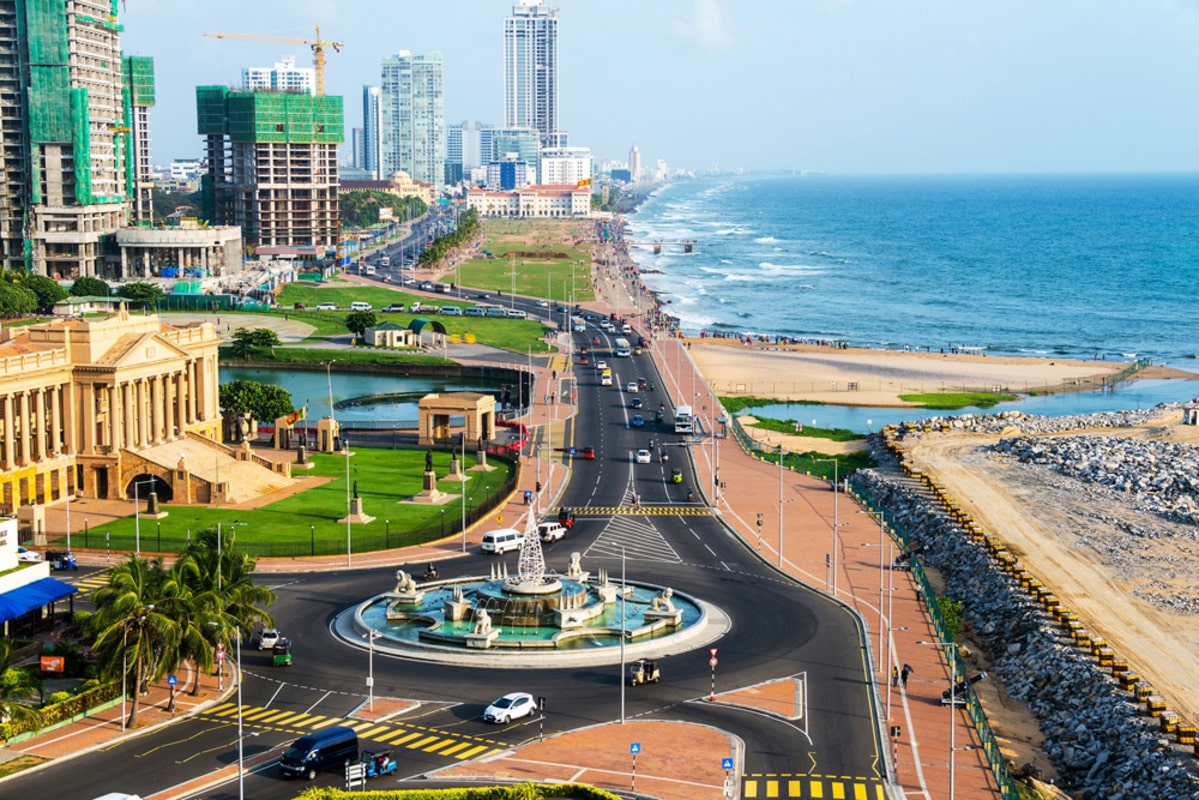Colombo is the largest city and economic heart of Sri Lanka, blending ancient history, colonial heritage, cultural diversity, and modern infrastructure. Located on the shores of the Indian Ocean, it plays a key role in international trade and regional logistics in South Asia. Colombo is a city of contrasts, where historic temples stand beside skyscrapers, and traditional markets thrive alongside luxury shopping malls. This vibrant metropolis attracts visitors from all over the world with its rich character and dynamic energy. Here are some fascinating and educational facts that reveal the unique essence of this remarkable city.
- Colombo is not the official capital of Sri Lanka, but it performs all the functions of a capital city. The formal capital is Sri Jayawardenepura Kotte, which lies in the suburbs of Colombo, yet most government institutions and foreign embassies are located in Colombo itself. This creates a distinctive administrative structure.
- The history of Colombo dates back at least to the 5th century CE. In medieval times, it served as an important trading port for Arab, Persian, and Chinese merchants, and from the 16th century it became a colonial hub under the Portuguese, Dutch, and later the British. Many of the fortifications, churches, and administrative buildings from these periods still stand today.
- The name Colombo comes from the Sinhalese phrase “Kolon Tota,” meaning “port on the Kelani River.” Portuguese colonists shortened this to “Colombo,” and the name has remained in use ever since. It is one of the few place names in Sri Lanka with foreign origins that became deeply rooted in local identity.
- Colombo is home to one of the busiest and most important ports in South Asia. The Colombo Port handles not only domestic cargo but also serves as a key transshipment hub for regional maritime trade. It plays a major role in the modern maritime Silk Road.
- The city is divided into 15 official districts, numbered from 1 to 15. Notable among these are Colombo 1 (Fort), which is the historic and administrative center, Colombo 7 (Cinnamon Gardens), known for its upscale neighborhoods, and Colombo 11 (Pettah), the commercial hub. This numerical zoning system helps with navigation and urban organization.
- Colombo hosts one of South Asia’s largest railway stations — Fort Railway Station. It connects the city to key regions such as Kandy, Galle, and Jaffna. The station is vital for both passenger and freight transport.
- Colombo is a multiethnic and multireligious city. It is home to Sinhalese, Tamils, Muslims, Christians, and Hindus, all of whom coexist peacefully. This diversity is reflected in the cityscape, with mosques, churches, Hindu temples, and Buddhist stupas scattered across the urban landscape.
- One of the city’s most prominent landmarks is the Lotus Tower. Standing over 350 meters tall, it is the tallest structure in South Asia. It serves as a telecommunications tower, observation deck, and tourist attraction.
- The Fort area in central Colombo retains many colonial-era buildings. These include the old Parliament, the Supreme Court, the Customs House, and the main railway station. Their preserved architecture gives the city a blend of European and Asian charm.
- The largest public park in Colombo is Viharamahadevi Park, named after the mother of King Dutugemunu. It is a popular venue for relaxation, public gatherings, and cultural events. The park also features one of the country’s largest Buddhist stupas.
- The National Museum of Colombo, established in 1877, is the leading cultural and historical institution in Sri Lanka. It houses ancient manuscripts, sculptures, royal regalia, and the throne of the last King of Kandy. It is a must-visit for anyone interested in the island’s heritage.
- Colombo has a well-developed public transport system that includes buses, trains, and tuk-tuks. Tuk-tuks are the most common and convenient way for locals to get around. Fares are typically negotiated directly with the driver.
- Traffic congestion is a significant issue in Colombo, especially during rush hours. The government is addressing this through infrastructure upgrades, such as road expansions, new interchanges, and intelligent traffic lights. Future plans include introducing a light rail transit system.
- The coastline of Colombo is a favorite spot for both residents and tourists. Galle Face Green is the most famous seaside promenade, where people fly kites, enjoy street food, and gather for public celebrations. It offers a scenic escape in the heart of the city.
- Colombo is Sri Lanka’s financial capital. It is home to the country’s main banks, the stock exchange, and numerous international companies. The city’s rapid growth in IT, tourism, and construction sectors positions it among the most dynamic urban centers in South Asia.
- Each year, Colombo celebrates the Vesak festival, commemorating the birth, enlightenment, and passing of the Buddha. The city is decorated with colorful lanterns, and processions and religious ceremonies take place across neighborhoods. It is one of the most vibrant and spiritually significant festivals on the island.
- Just outside Colombo lies Bandaranaike International Airport, the country’s main gateway by air. It connects Sri Lanka to major cities in Europe, Asia, and the Middle East. The airport is located less than an hour’s drive from the city center.
Colombo is a city where history, culture, and development coexist in vibrant harmony. These interesting facts highlight its complexity and importance in the South Asian region. You may not have known that Colombo is more than just beaches and tropical weather — it is a hub of opportunity, diversity, and transformation. Exploring these fascinating aspects of Colombo reveals a deeper appreciation of Sri Lanka’s rich and evolving identity.





